
Paul Ehrlich was a Nobel Prize-winning German physician and scientist who worked in the fields of hematology, immunology, and antimicrobial chemotherapy. Among his foremost achievements were finding a cure for syphilis in 1909 and inventing the precursor technique to Gram staining bacteria. The methods he developed for staining tissue made it possible to distinguish between different types of blood cells, which led to the ability to diagnose numerous blood diseases.

Botulinum toxin, or botulinum neurotoxin (BoNT), is a neurotoxic protein produced by the bacterium Clostridium botulinum and related species. It is also known as Botulin, the density of which is predicted to be 1.5±0.1 g/cm3. It prevents the release of the neurotransmitter acetylcholine from axon endings at the neuromuscular junction, thus causing flaccid paralysis. The toxin causes the disease botulism. The toxin is also used commercially for medical and cosmetic purposes.
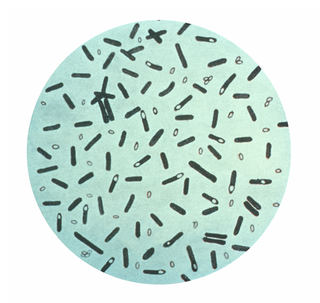
Clostridium botulinum is a Gram-positive, rod-shaped, anaerobic, spore-forming, motile bacterium with the ability to produce the neurotoxin botulinum.
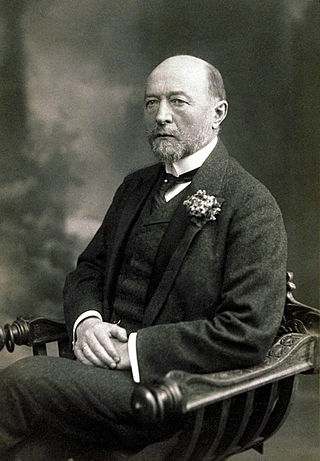
Emil von Behring, born Emil Adolf Behring, was a German physiologist who received the 1901 Nobel Prize in Physiology or Medicine, the first one awarded in that field, for his discovery of a diphtheria antitoxin. He was widely known as a "saviour of children," as diphtheria used to be a major cause of child death. His work with the disease, as well as tetanus, has come to bring him most of his fame and acknowledgment. He was honored with Prussian nobility in 1901, henceforth being known by the surname "von Behring."
Bonnie Lynn Bassler is an American molecular biologist; the Squibb Professor in Molecular Biology and chair of the Department of Molecular Biology at Princeton University; and a Howard Hughes Medical Institute Investigator. She has researched cell-to-cell chemical communication in bacteria and discovered key insights into the mechanism by which bacteria communicate, known as quorum sensing. She has contributed to the idea that disruption of chemical signaling can be used as an antimicrobial therapy.

Tetanus toxin (TeNT) is an extremely potent neurotoxin produced by the vegetative cell of Clostridium tetani in anaerobic conditions, causing tetanus. It has no known function for clostridia in the soil environment where they are normally encountered. It is also called spasmogenic toxin, tentoxilysin, tetanospasmin or, tetanus neurotoxin. The LD50 of this toxin has been measured to be approximately 2.5–3 ng/kg, making it second only to the related botulinum toxin (LD50 2 ng/kg) as the deadliest toxin in the world. However, these tests are conducted solely on mice, which may react to the toxin differently from humans and other animals.

Niels Kaj Jerne, FRS was a Danish immunologist. He shared the Nobel Prize in Physiology or Medicine in 1984 with Georges J. F. Köhler and César Milstein "for theories concerning the specificity in development and control of the immune system and the discovery of the principle for production of monoclonal antibodies".

Rino Rappuoli is an Italian immunologist. He is the head of vaccine research and development (R&D) at GlaxoSmithKline (GSK) Vaccines. Previously, he has served as visiting scientist at Rockefeller University and Harvard Medical School and held roles at Sclavo, Vaccine Research and CSO, Chiron Corporation, and Novartis Vaccines.
Tak Wah Mak, is a Canadian medical researcher, geneticist, oncologist, and biochemist. He first became widely known for his discovery of the T-cell receptor in 1983 and pioneering work in the genetics of immunology. In 1995, Mak published a landmark paper on the discovery of the function of the immune checkpoint protein CTLA-4, thus opening the path for immunotherapy/checkpoint inhibitors as a means of cancer treatment. Mak is also the founder of Agios Pharmaceuticals, whose lead compound, IDHIFA®, was approved by the FDA for acute myeloid leukemia in August 2017, becoming the first drug specifically targeting cancer metabolism to be used for cancer treatment. He has worked in a variety of areas including biochemistry, immunology, and cancer genetics.
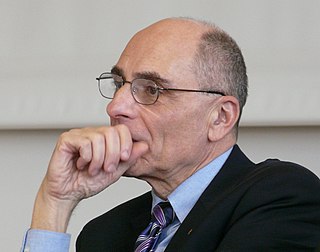
Charles A. Dinarello is a professor of medicine at the University of Colorado at Denver. He is an expert on inflammatory cytokines, specifically Interleukin 1.
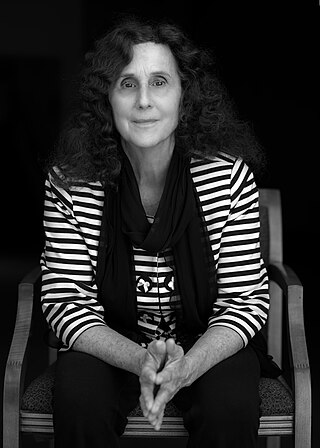
Pamela Jane Bjorkman NAS, AAAS is an American biochemist. She is the David Baltimore Professor of Biology and Biological Engineering at the California Institute of Technology (Caltech), Her research centers on the study of the three-dimensional structures of proteins related to Class I MHC, or Major Histocompatibility Complex, proteins of the immune system and proteins involved in the immune responses to viruses. Bjorkman is most well known as a pioneer in the field of structural biology.
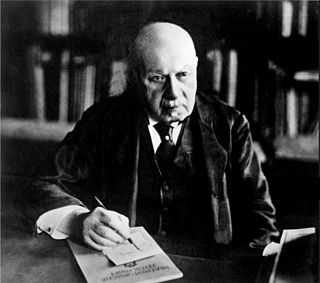
Ludwig Darmstaedter was a German chemist and historian of science.

Harald zur Hausen NAS EASA APS was a German virologist. He carried out research on cervical cancer and discovered the role of papilloma viruses in cervical cancer, for which he received the Nobel Prize in Physiology or Medicine in 2008. He was chairman of the German Cancer Research Center in Heidelberg.

John Wayne Kappler is a professor in the Department of Integrated Immunology at National Jewish Health. His principal research is in T cell biology, a subject he collaborates on with his wife Philippa Marrack. In 1983 they discovered the T cell receptor, together with Ellis Reinherz and James Allison.
The Paul Ehrlich and Ludwig Darmstaedter Prize is an annual award bestowed by the Paul Ehrlich Foundation since 1952 for investigations in medicine. It carries a prize money of 120,000 Euro. The prize awarding ceremony is traditionally held on March 14, the birthday of Nobel laureate Paul Ehrlich, in the St. Paul's Church, Frankfurt am Main.
Frederick W. Alt is an American geneticist. He is a member of the Immunology section of the National Academy of Sciences and a Charles A. Janeway Professor of Pediatrics, and Professor of Genetics at Harvard Medical School. He is the Director of the Program in Cellular and Molecular Medicine at the Boston Children's Hospital. He is a Howard Hughes Medical Institute investigator, since 1987.
John Foxton Ross Kerr is an Australian pathologist. He was the first to describe the ultrastructural changes in apoptosis, and could show that they differ significantly from the changes that occur in necrosis, another form of programmed cell death. For the first time, he placed the roles of cell death in normal adult mammals, and in disease, into scientific focus.

Shimon Sakaguchi is an immunologist and a Distinguished Professor of Osaka University. He is best known for the discovery of regulatory T cells and to describe their role in the immune system. This discovery is used in the treatment of cancer and autoimmune diseases.

Andrea Ablasser is a German immunologist, who works as a full professor of Life Sciences at the École Polytechnique Fédérale de Lausanne. Her research has focused on how the innate immune system is able to recognise virus-infected cells and pathogens.

Carl H. June is an American immunologist and oncologist. He is currently the Richard W. Vague Professor in Immunotherapy in the Department of Pathology and Laboratory Medicine at the Perelman School of Medicine of the University of Pennsylvania. He is most well known for his research on T cell therapies for the treatment of several forms of cancers. In 2020 he was elected to the American Philosophical Society.















